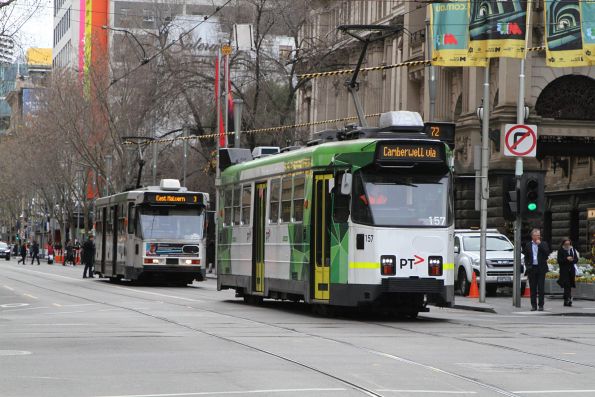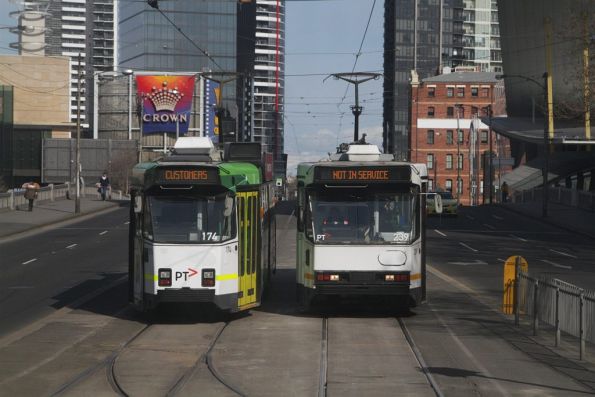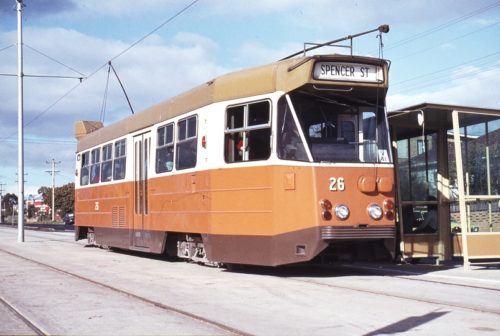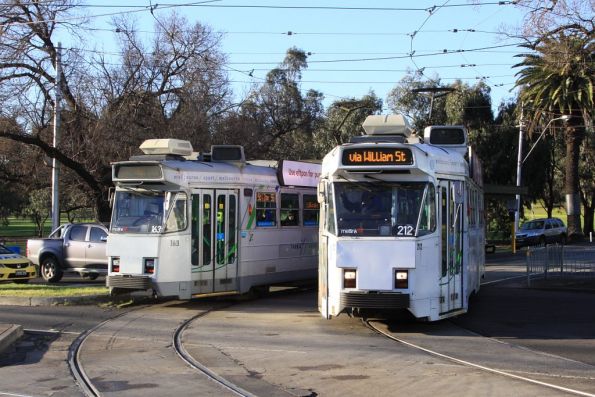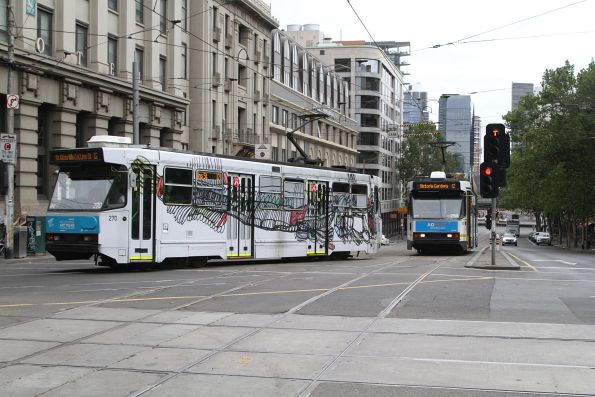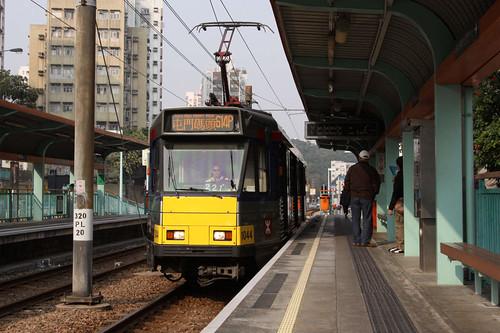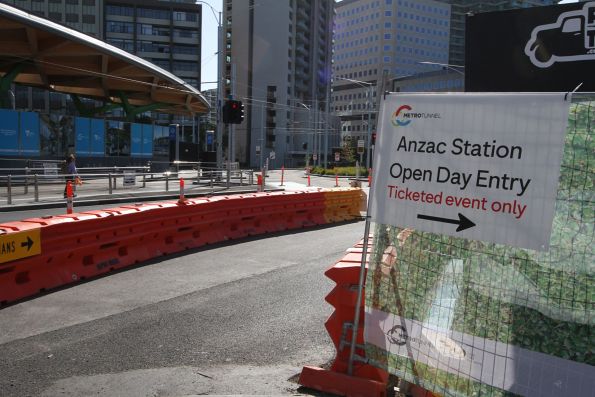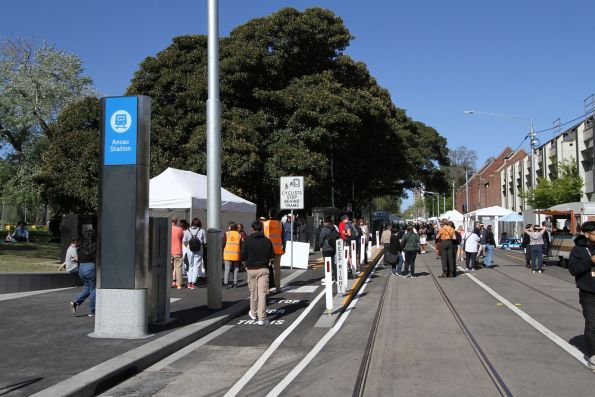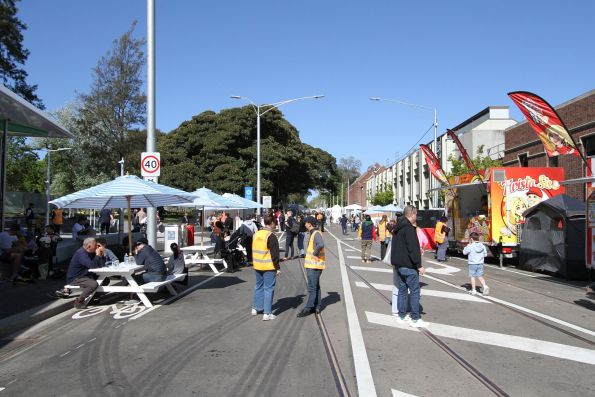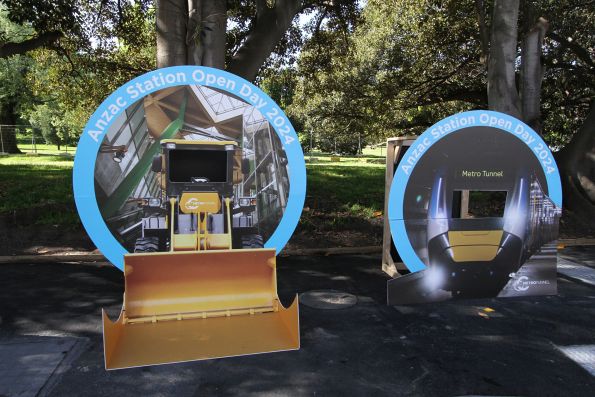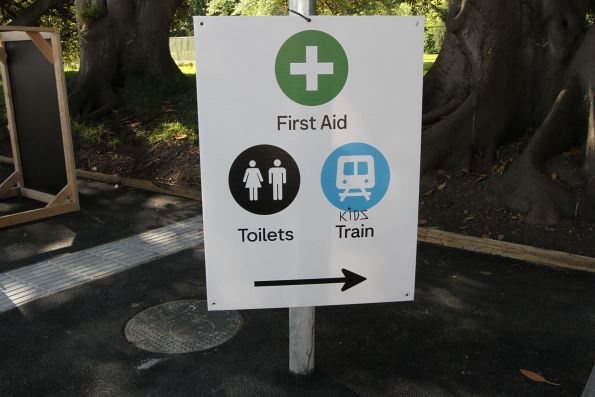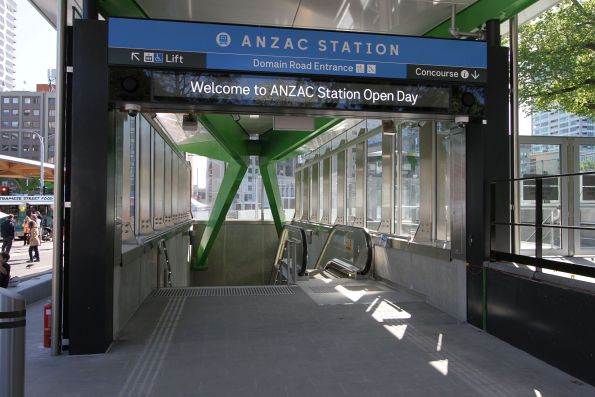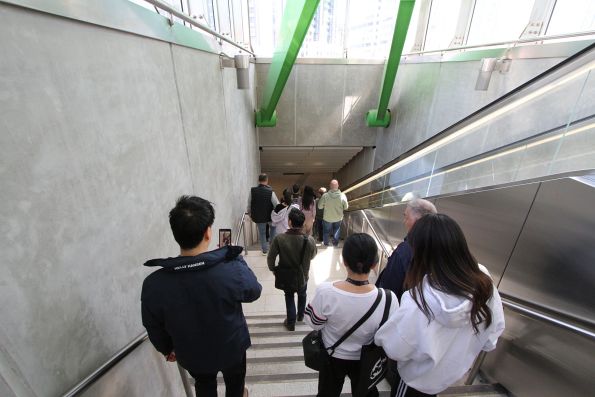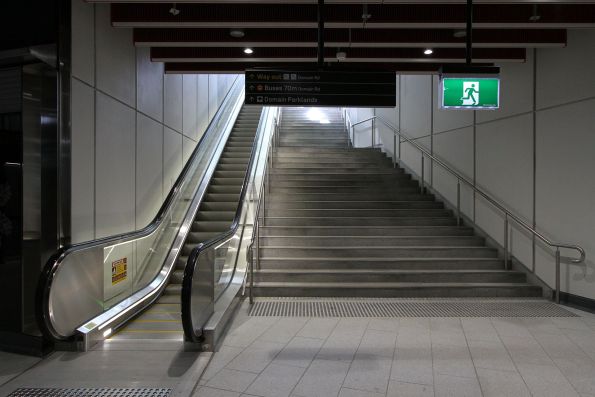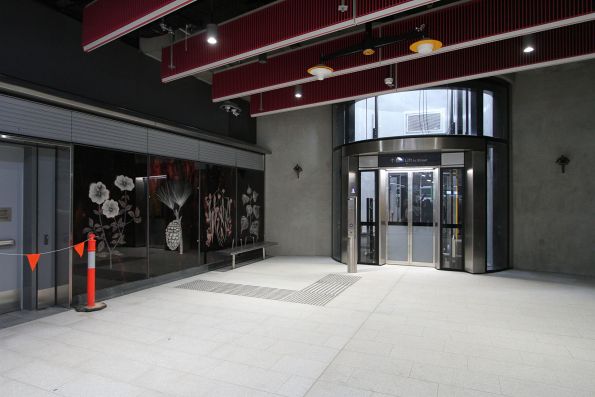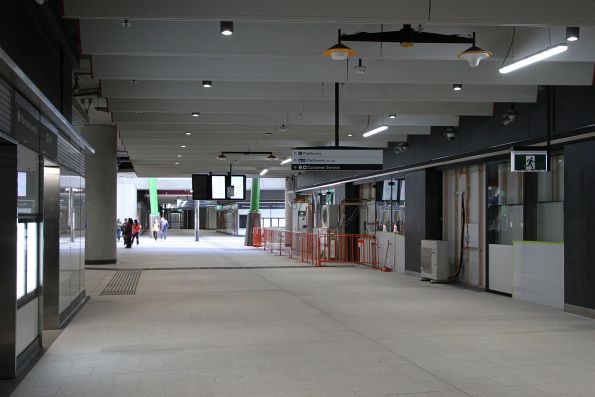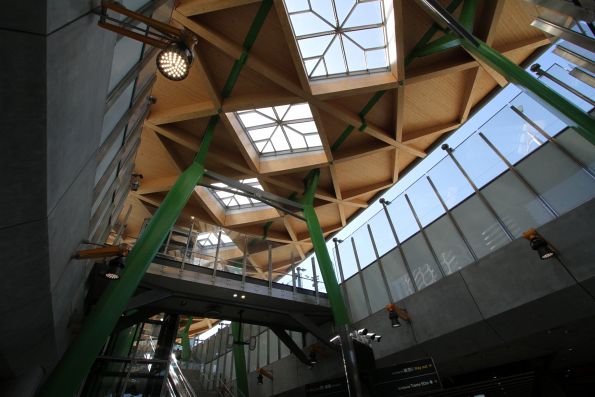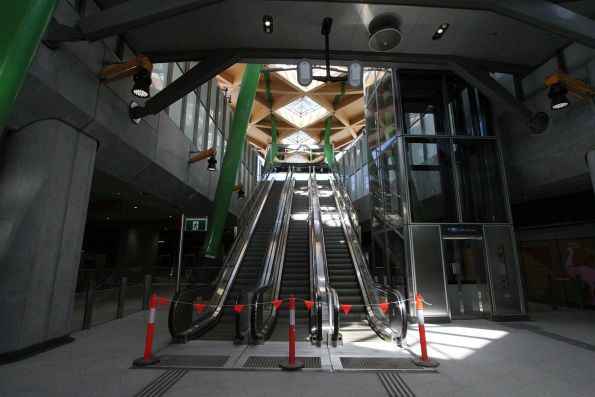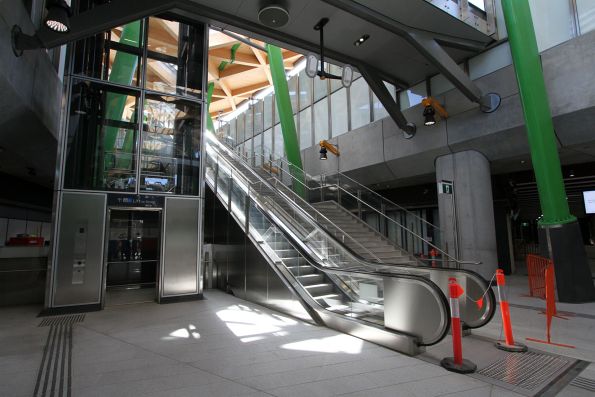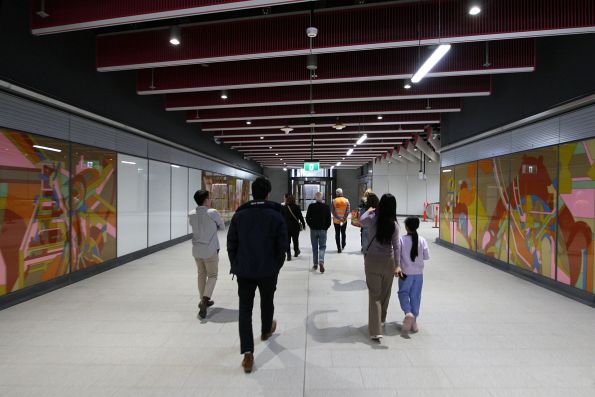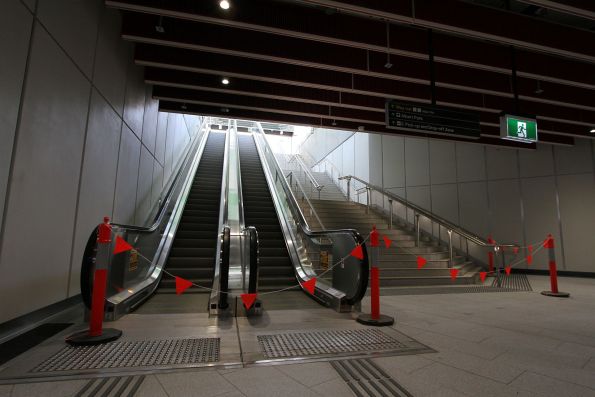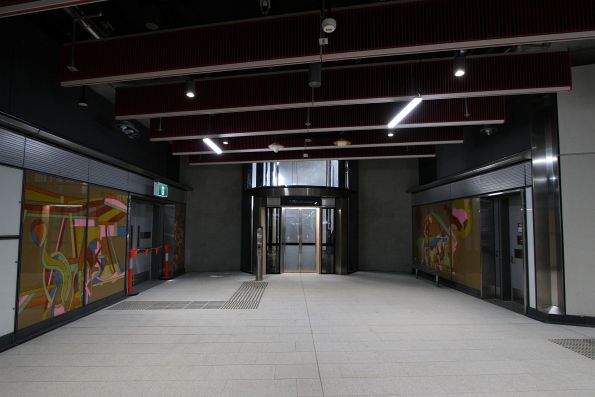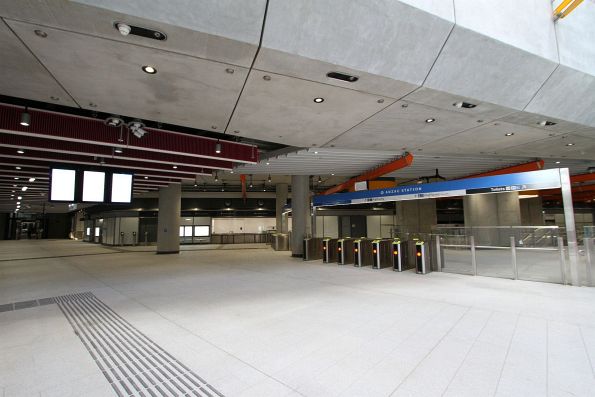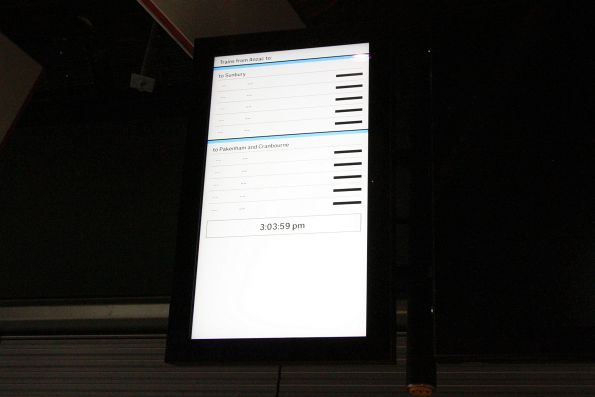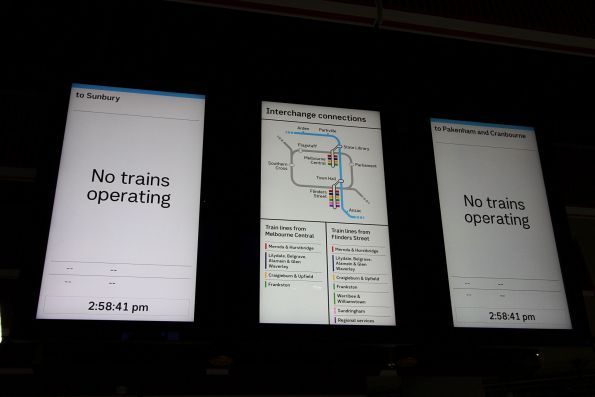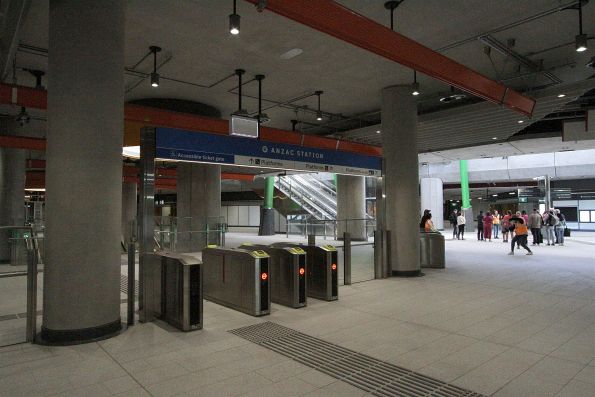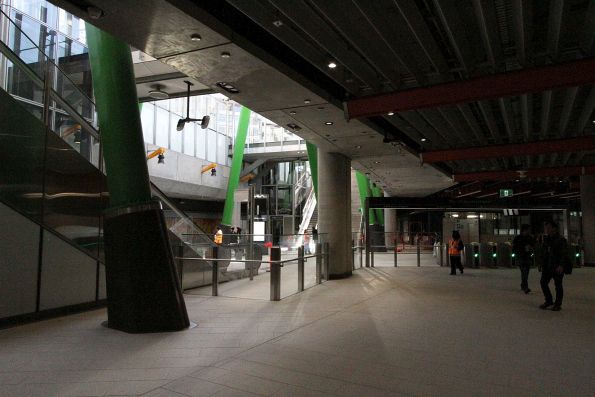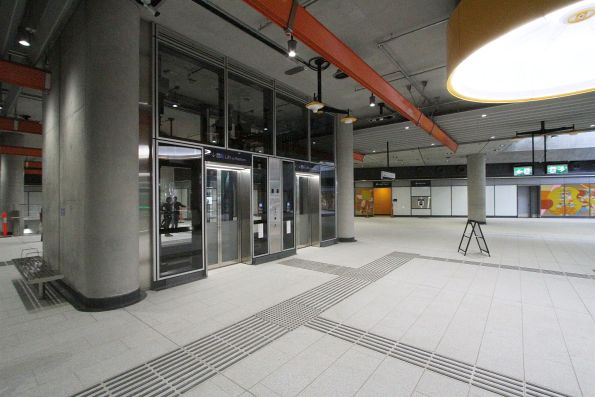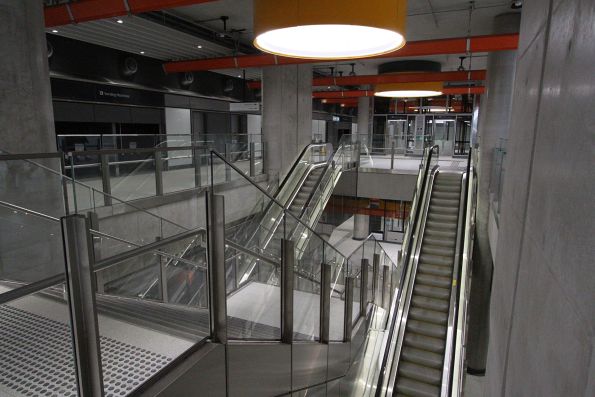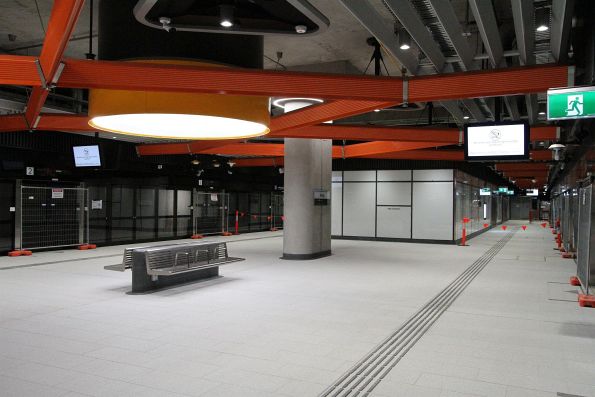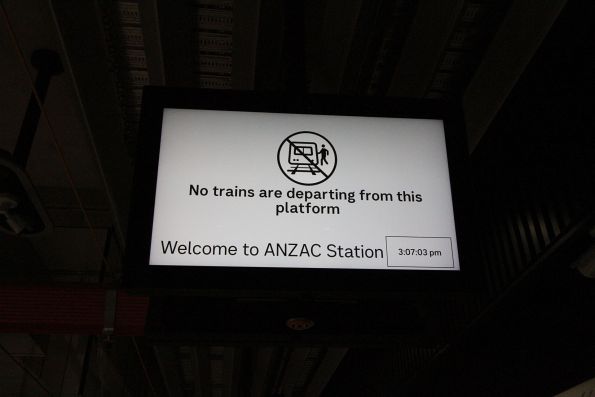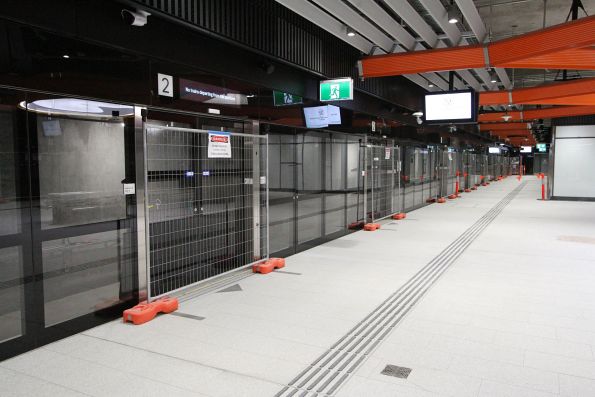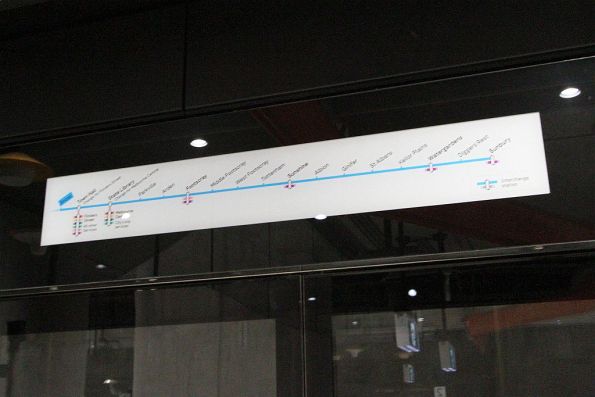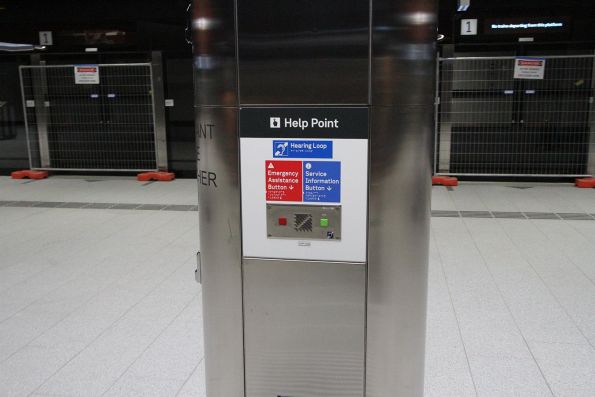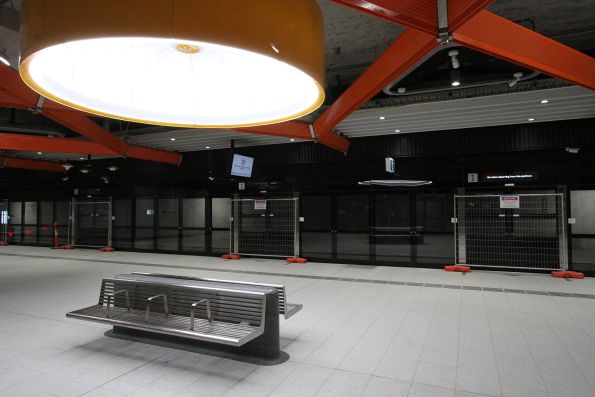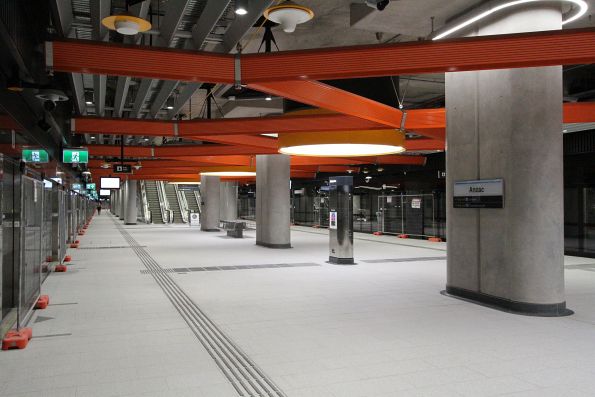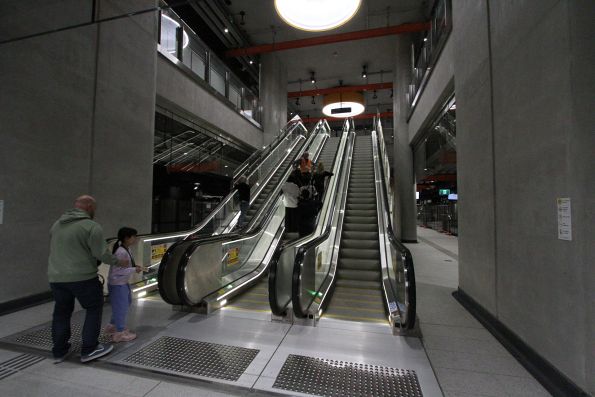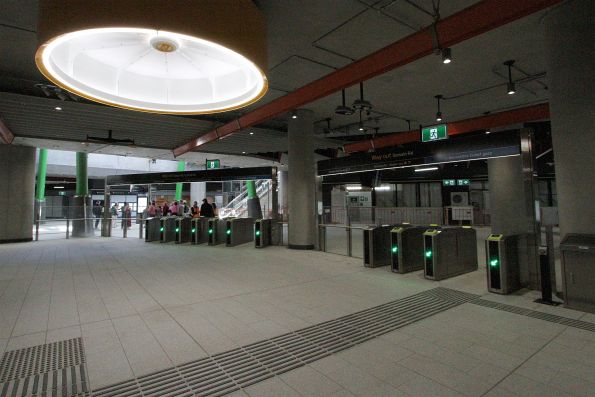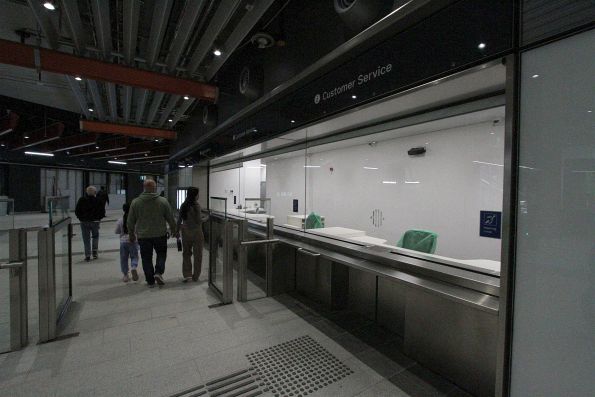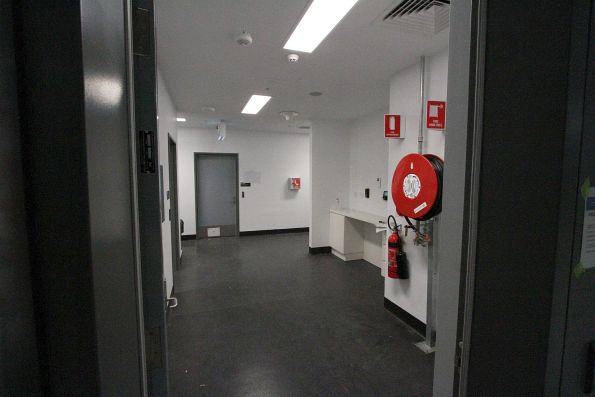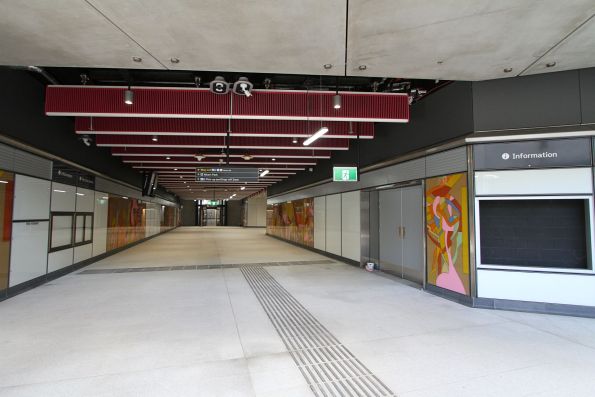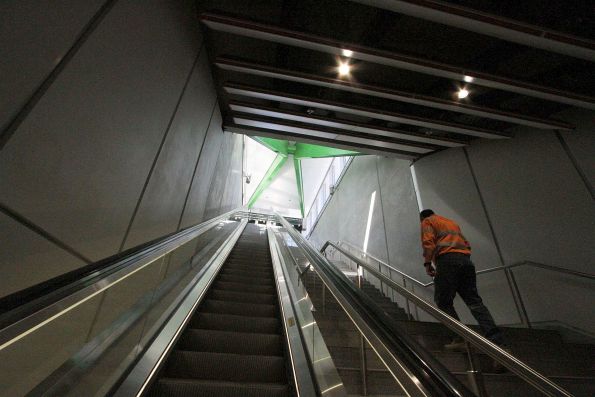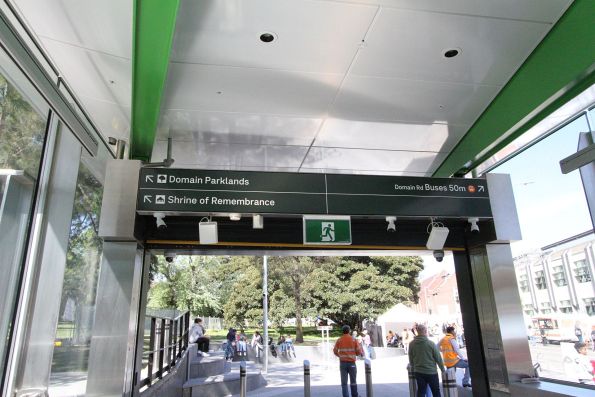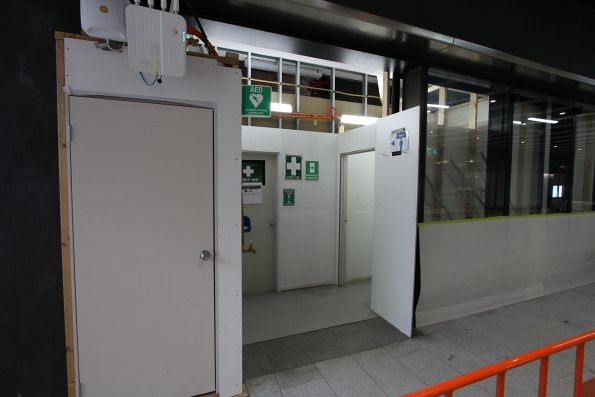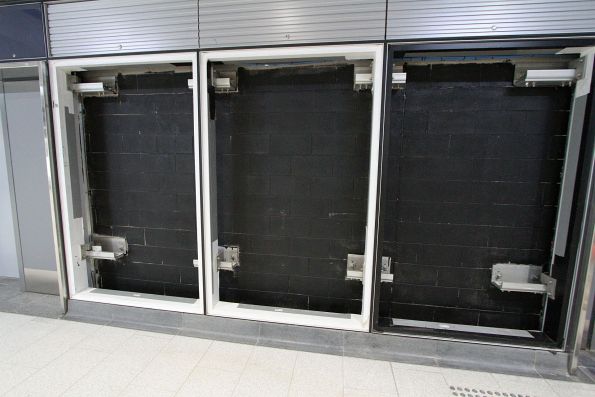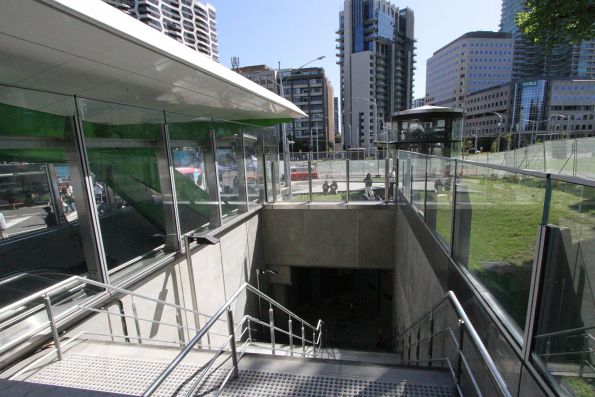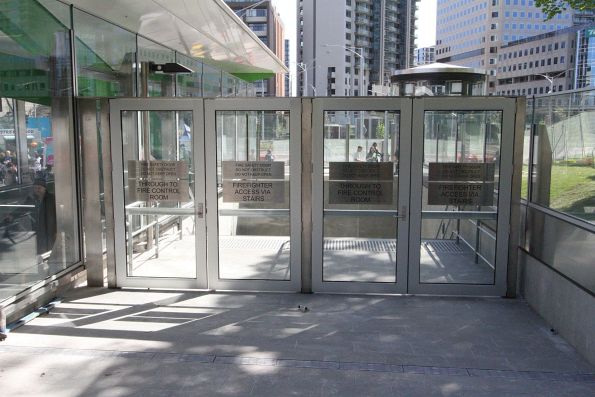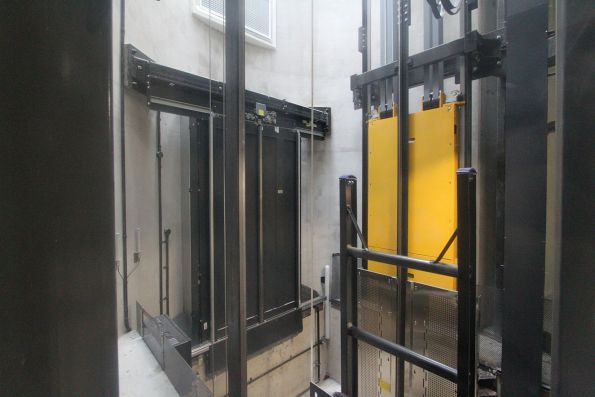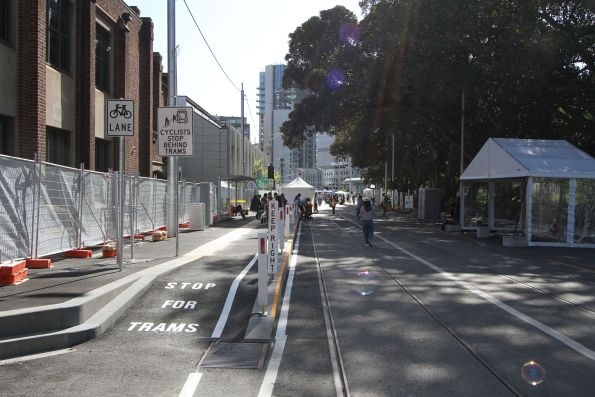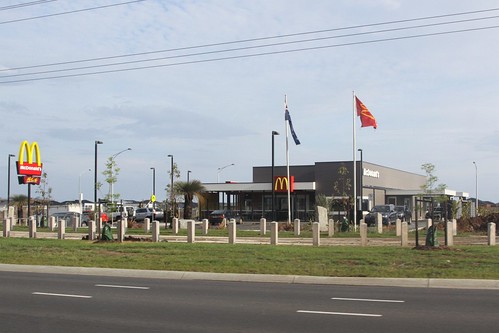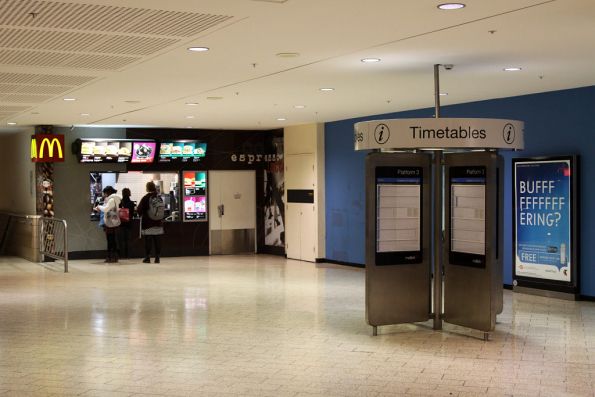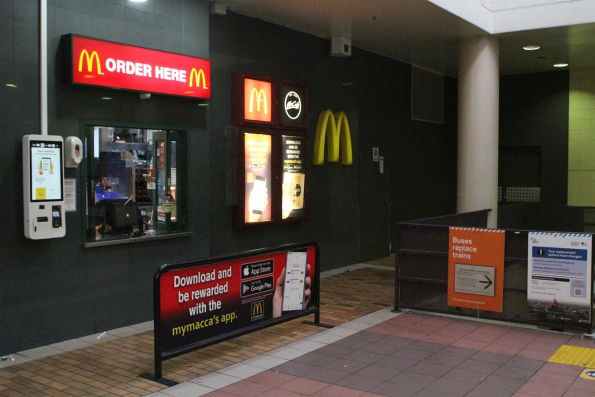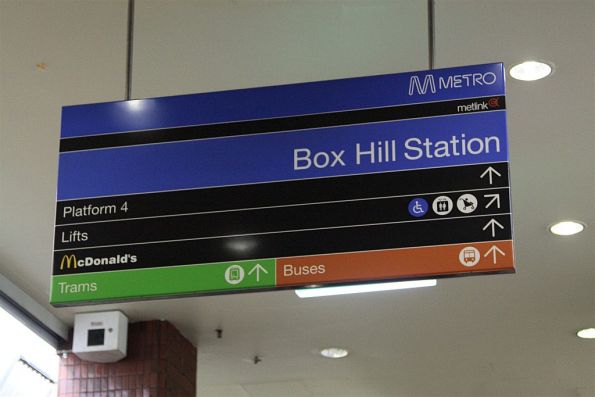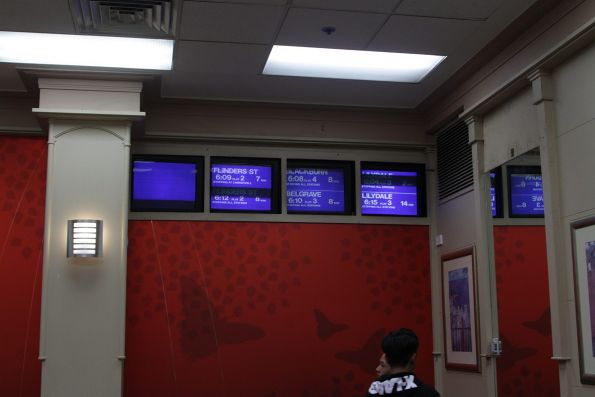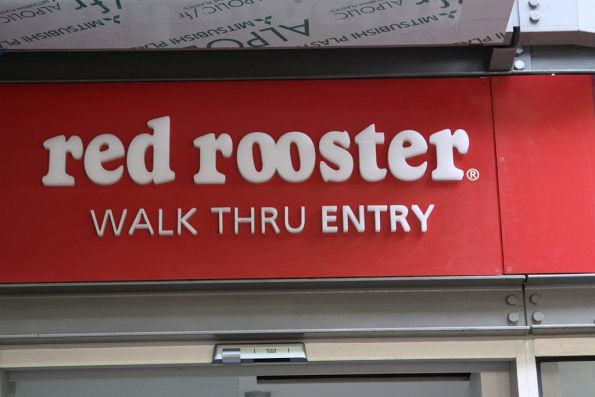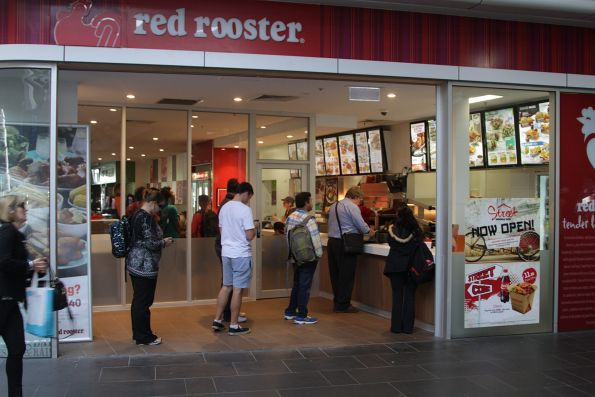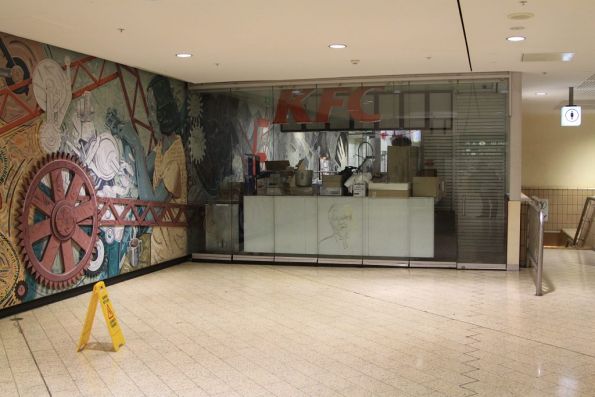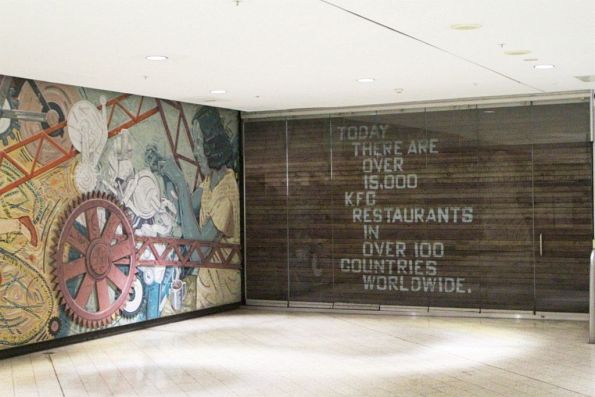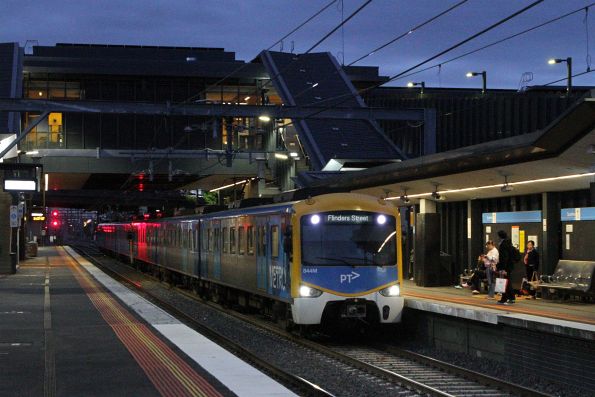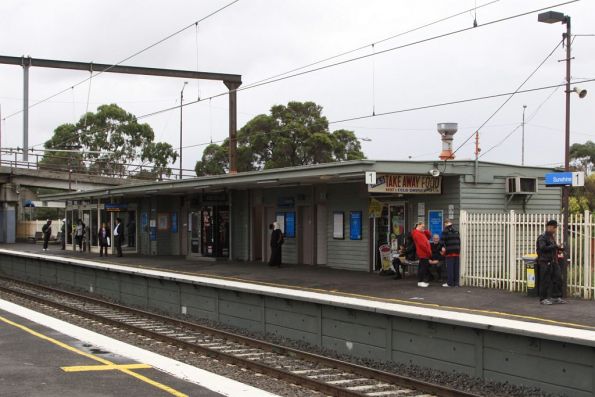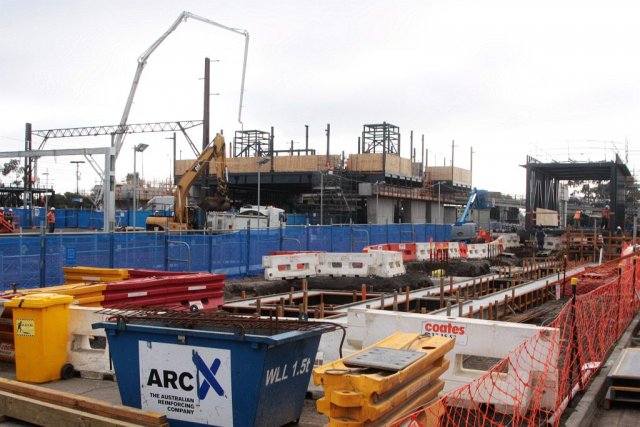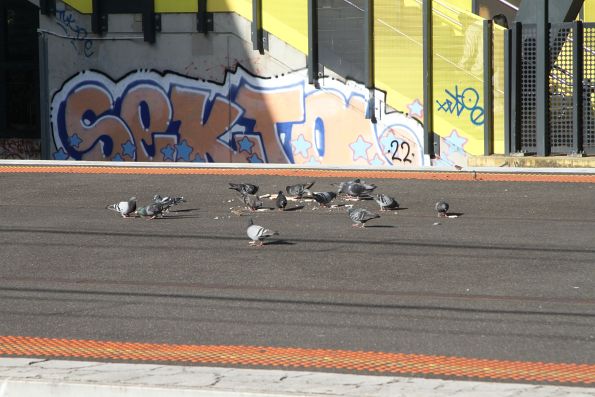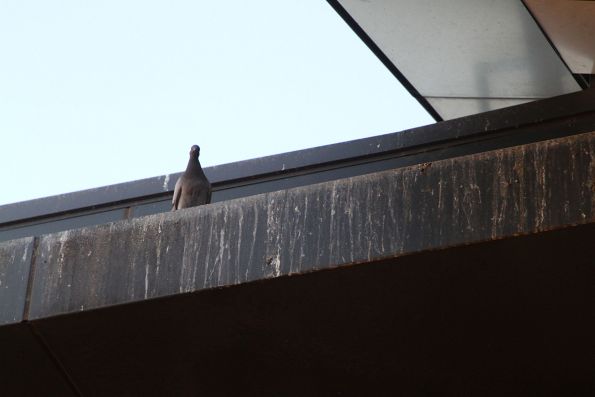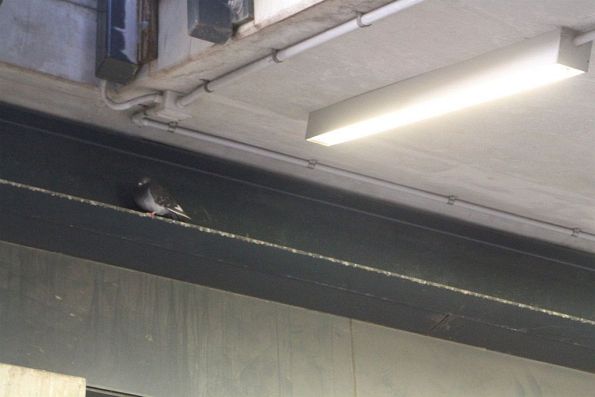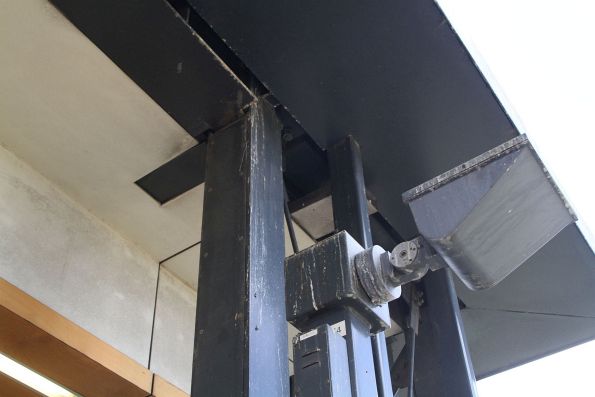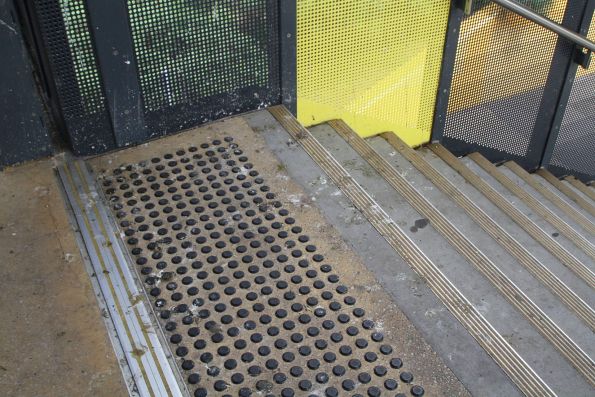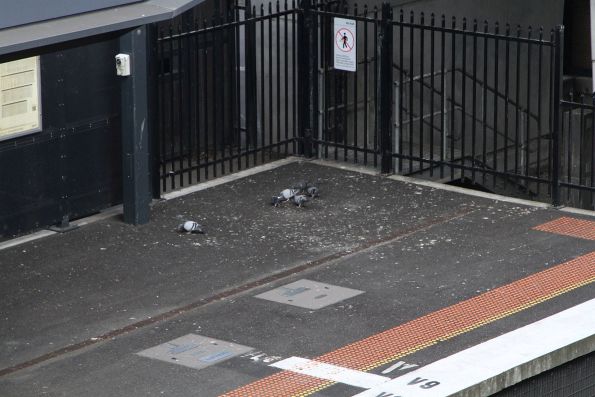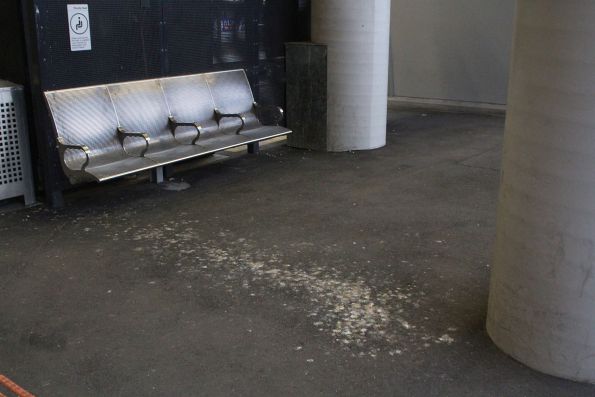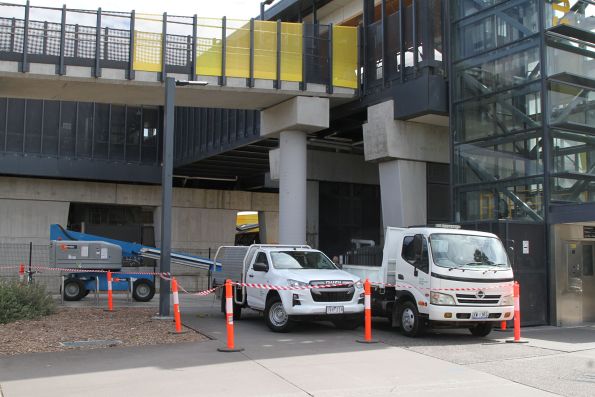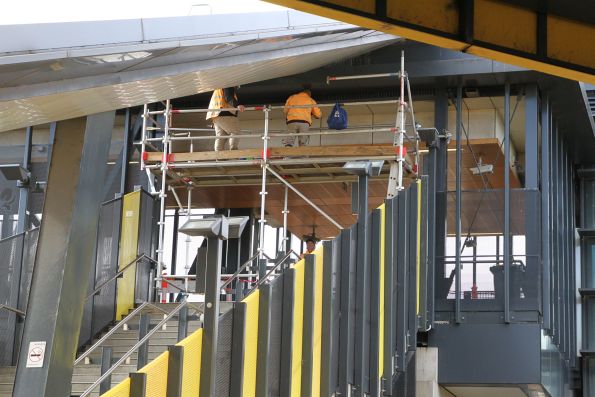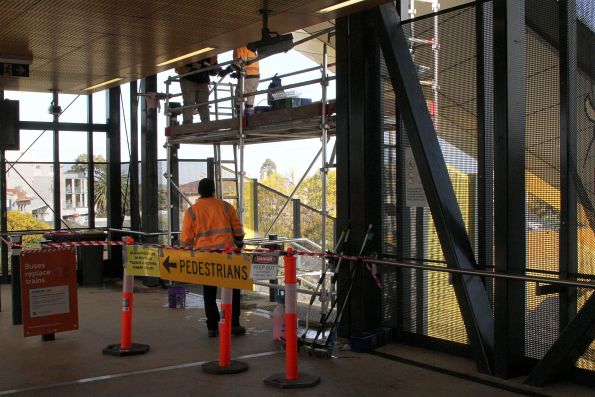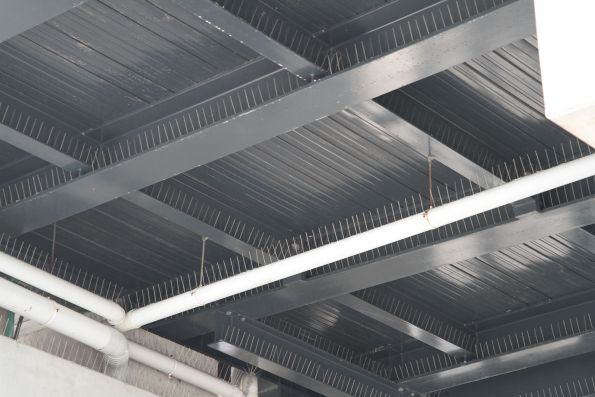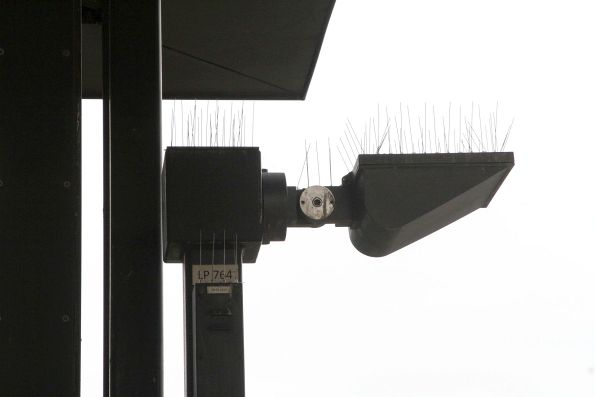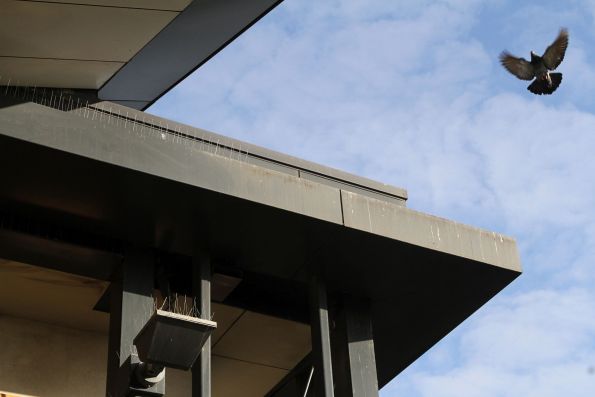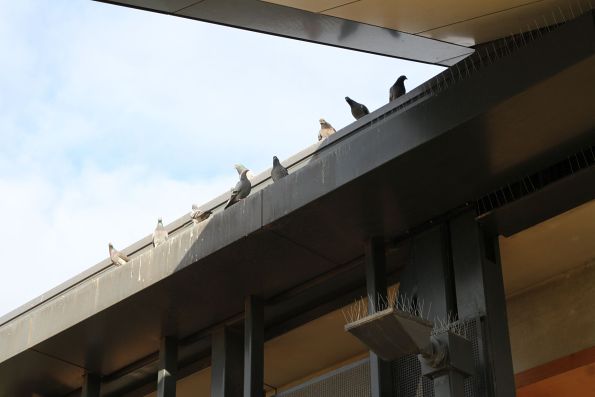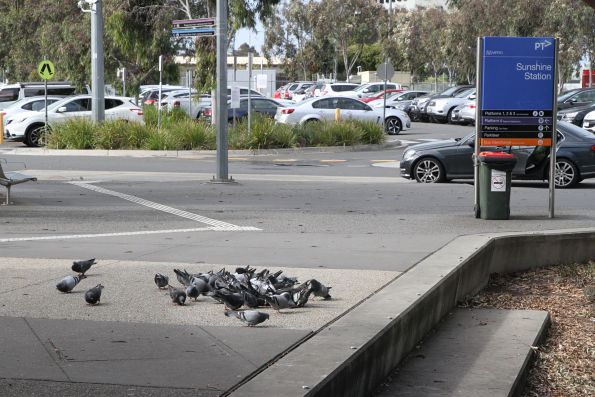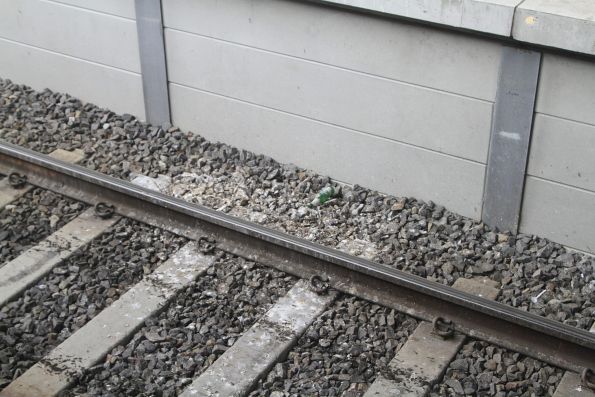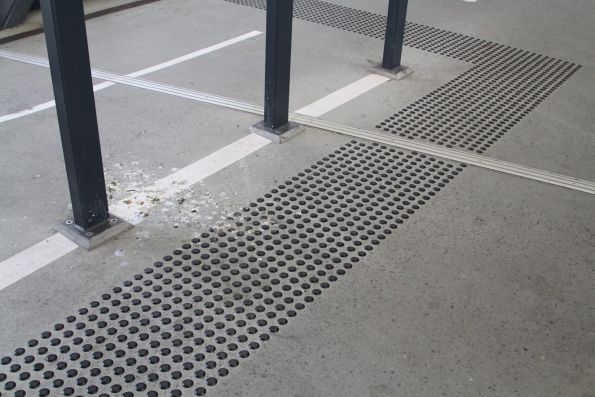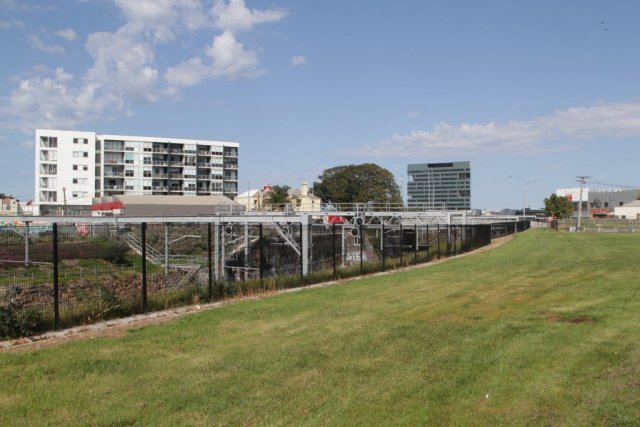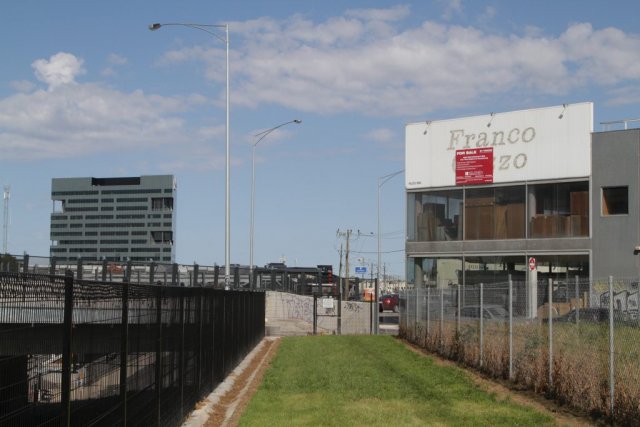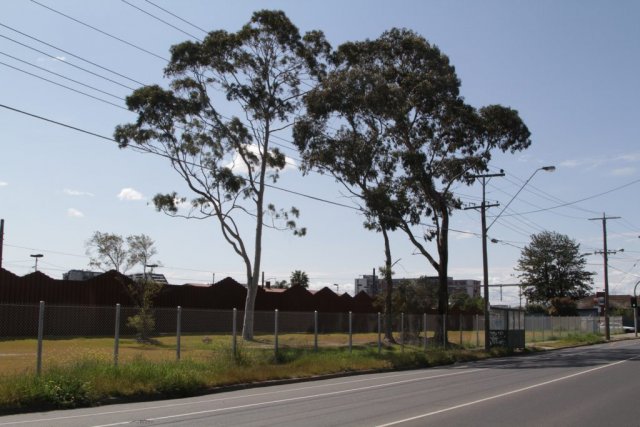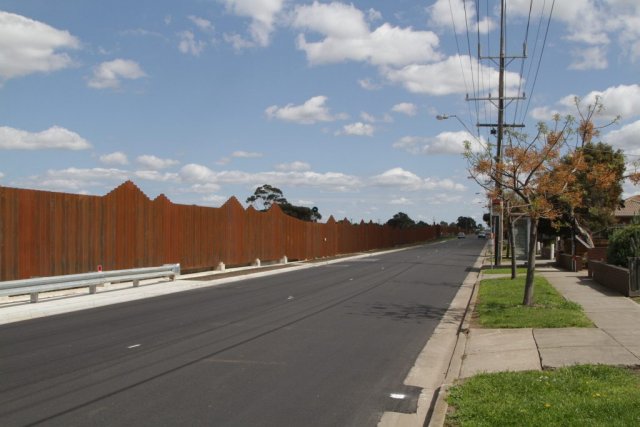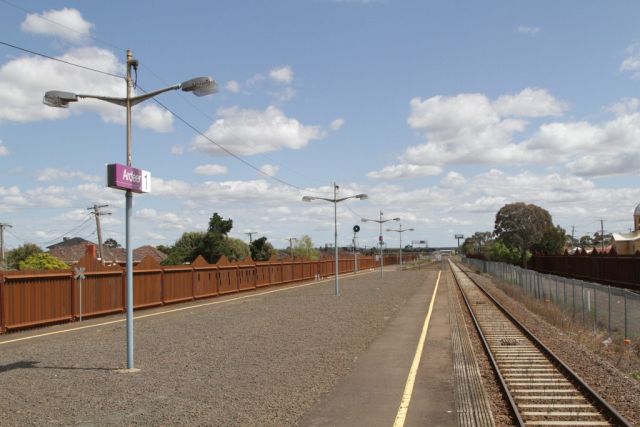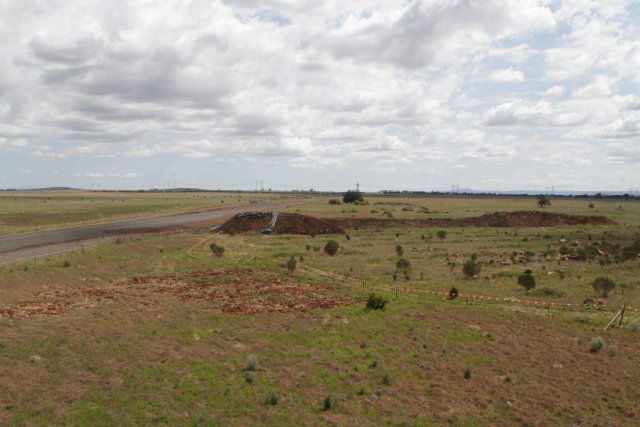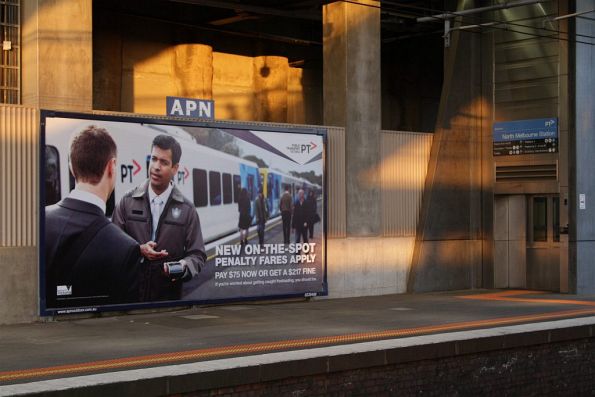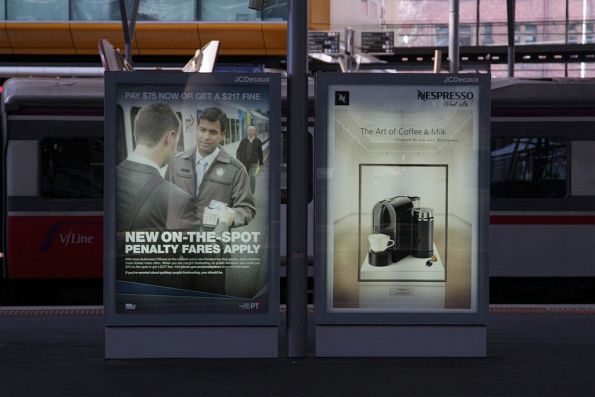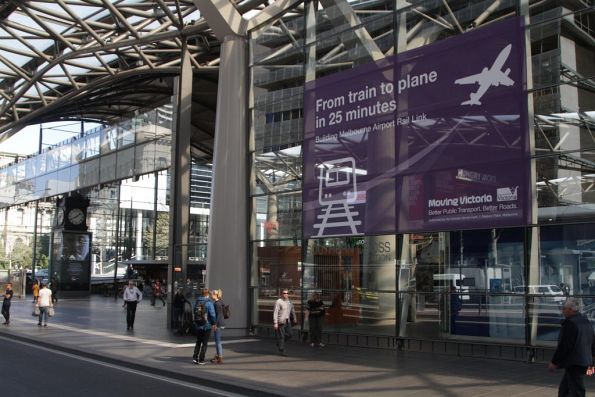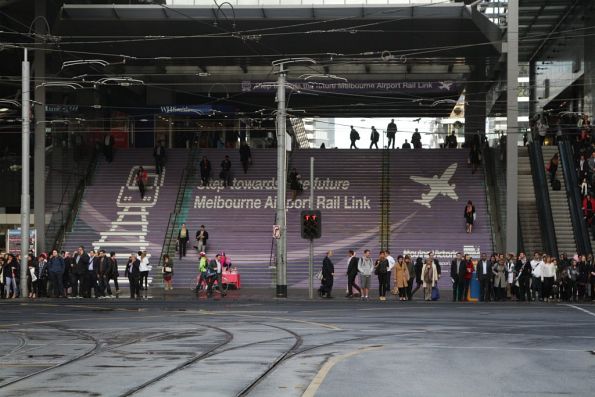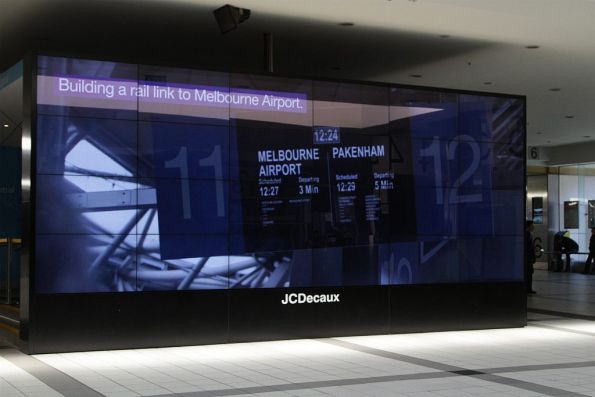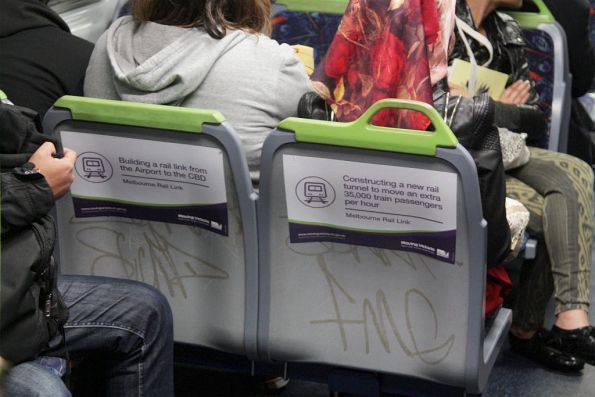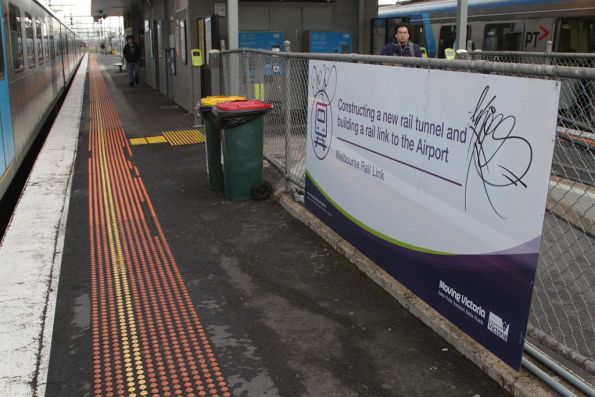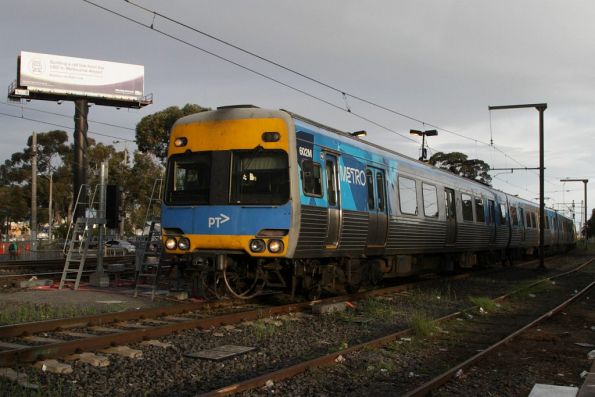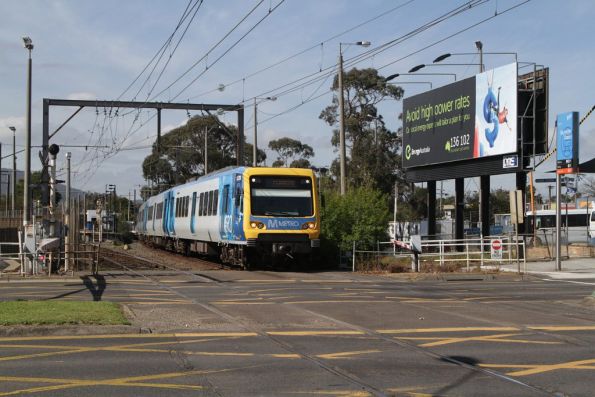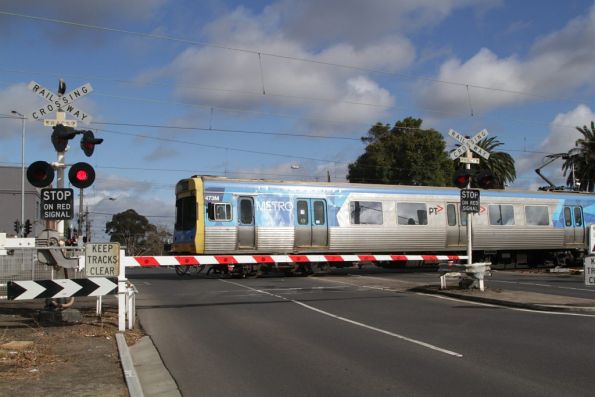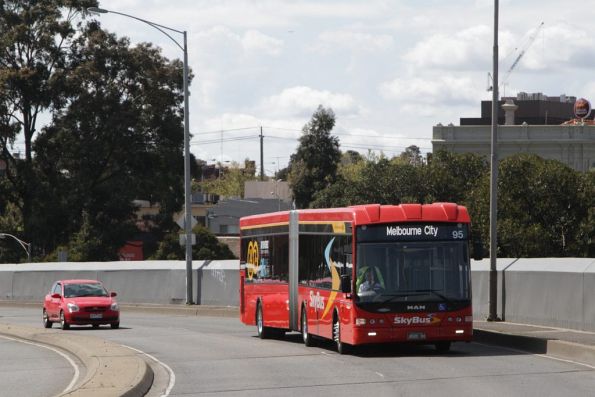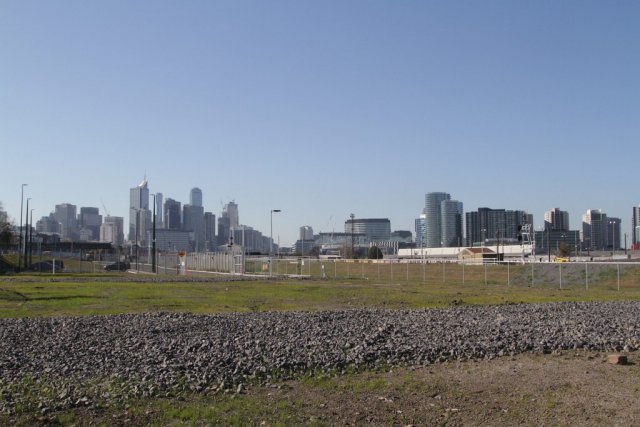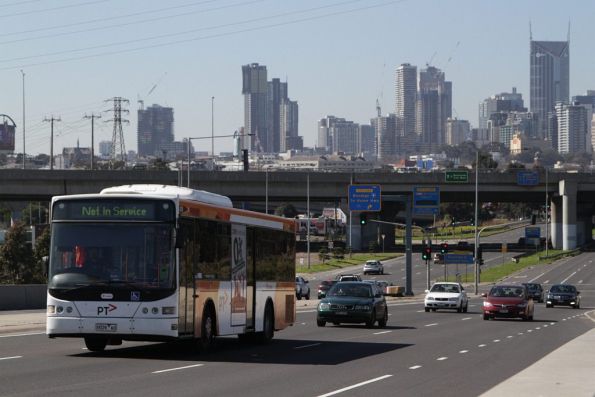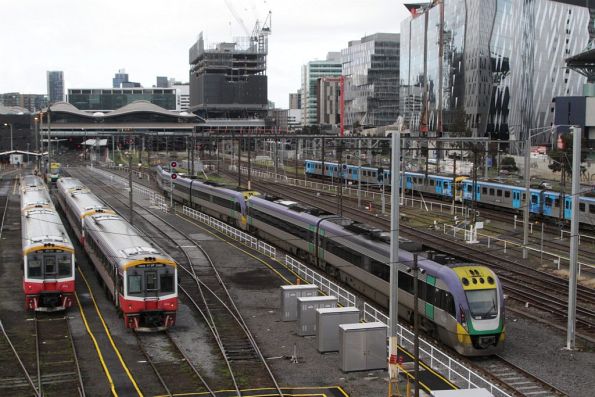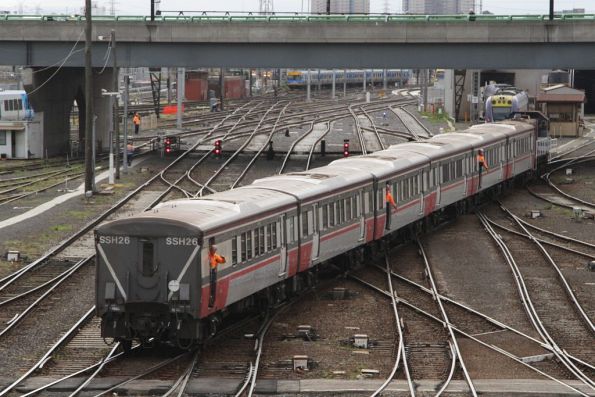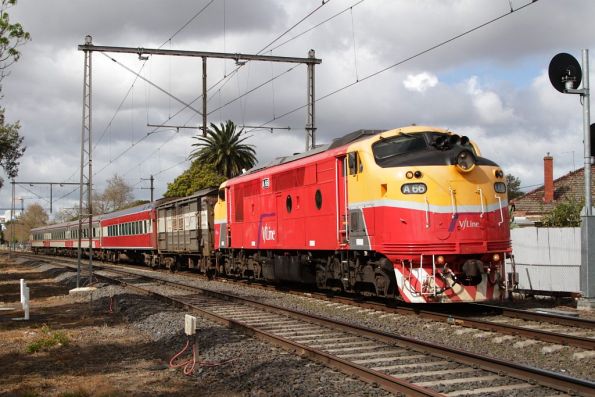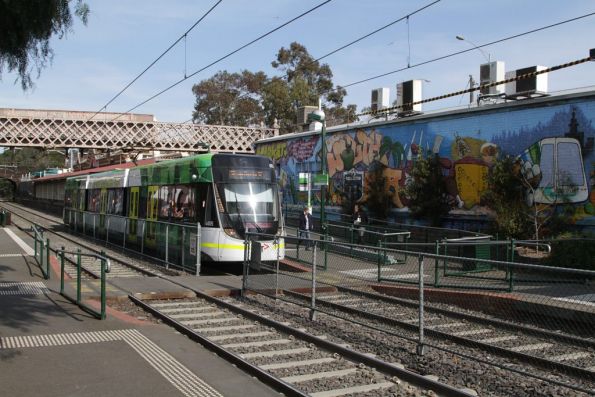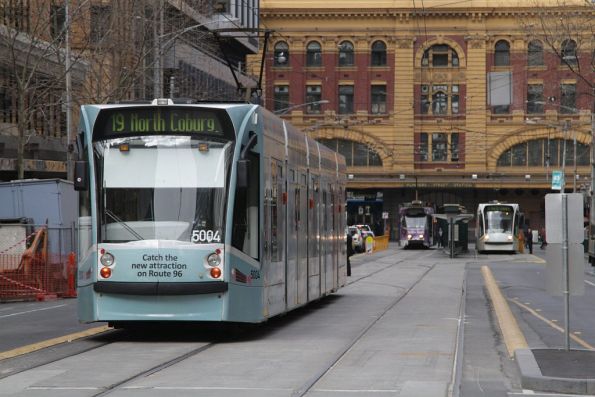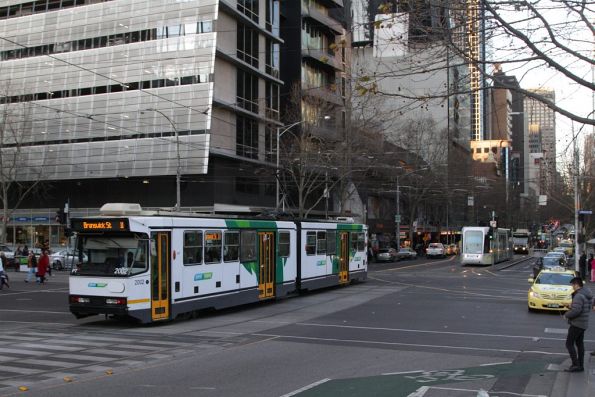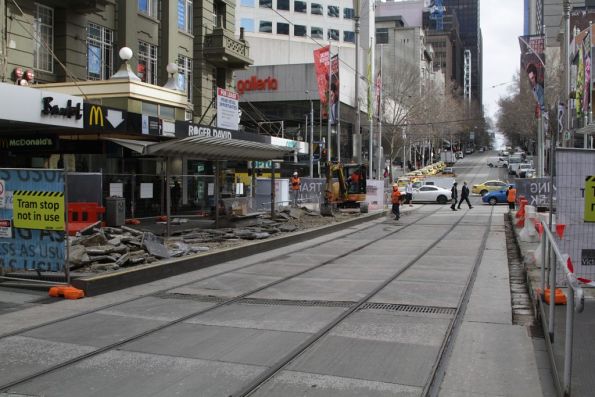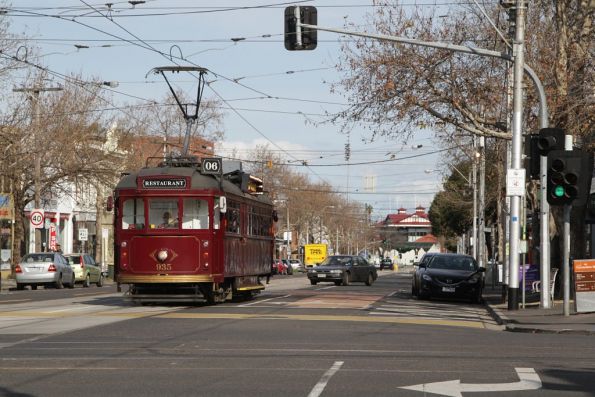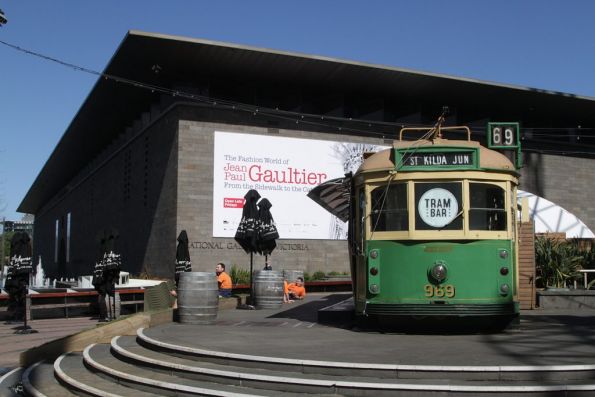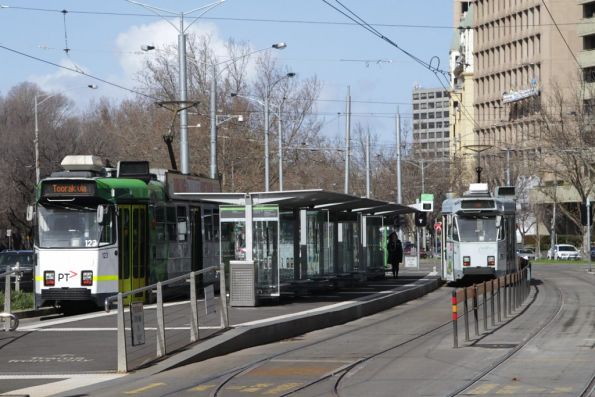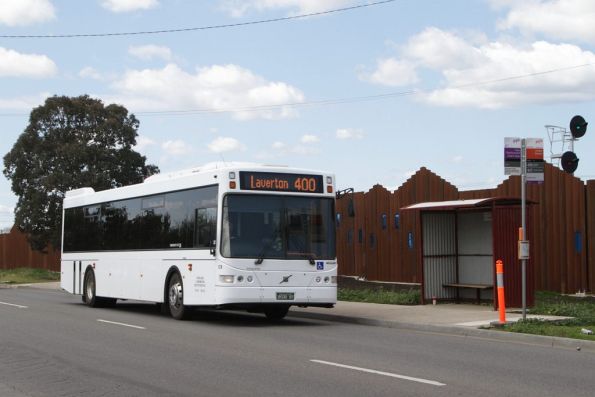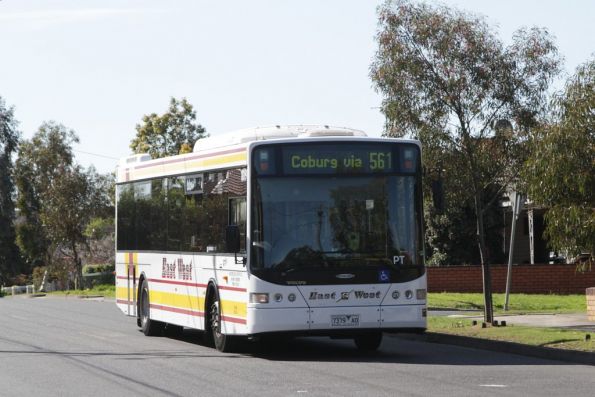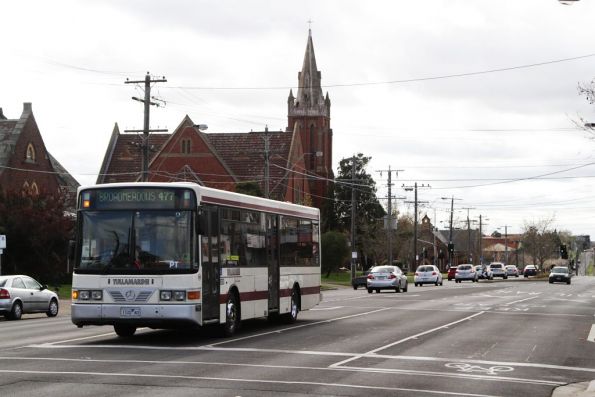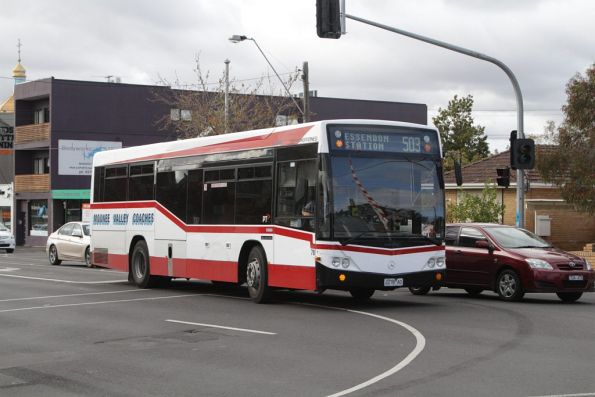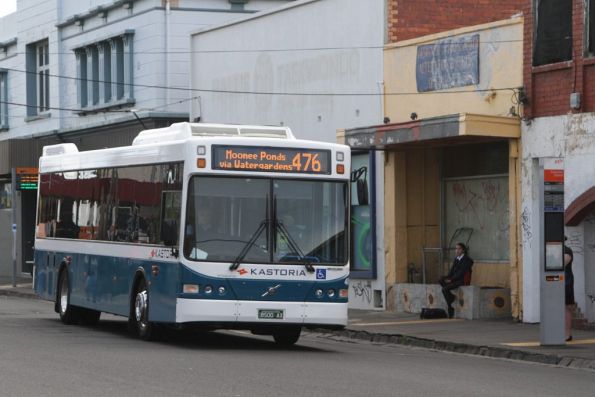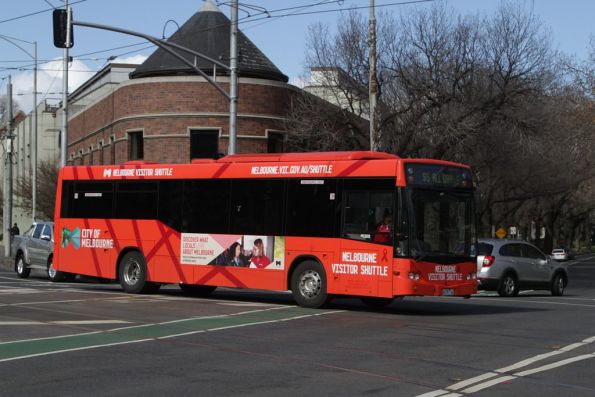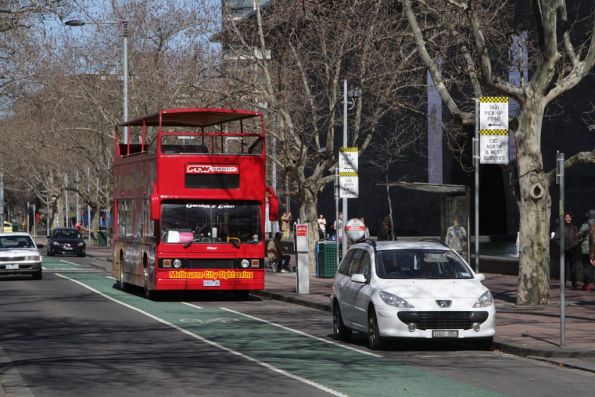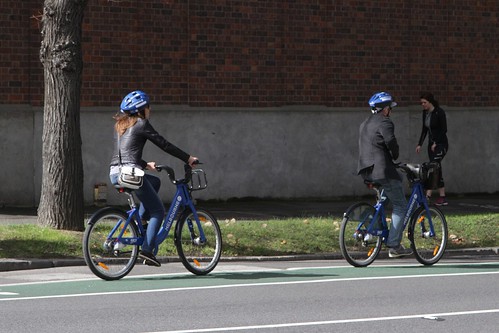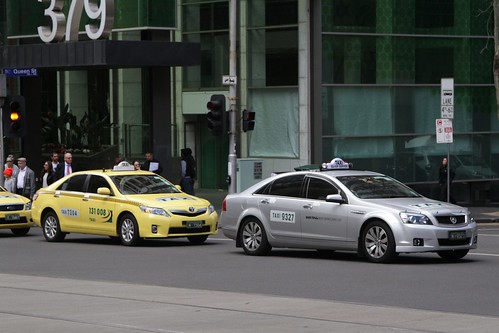Melbourne has a massive tram network, so also needs a massive fleet of trams to operate it – almost 500 in total, ranging in age from almost new E class low floors, to the decades old W class used on the City Circle tourist service. But there are two similar but different classes of tram that came about for an interesting reason – the high-floor single-unit Z and A class.
If you look at them head on, the difference is obvious – the Z class has a pointy nose, but the A class has a flat one.
But there is also less noticeable difference – A class trams are shorter than a Z, at 15.01 metres vs 16.64 metres.
The reason – the Z class trams were built in the 1970s to be compatible with a network designed for the W class trams.
With a pointy nose was so a longer tram could still negotiate curves built for the W class, without smacking into oncoming trams.
And the flatter fronted A class trams need to be shorter lest their noses come afoul on the same curves.
And the reason for the difference – a state election of all things!
John Dunn details it in his book “A History of Commonwealth Engineering – volume 4, 1977-1985″.
Since it was expected that the M&MTB would very soon need to order more new trams, the Comeng team at Dandenong began looking at a revised version of the Z3 units in the early 1980s – these being dubbed by them as Z4s.
A number of different concepts were considered, all of which were intended to be cheaper to manufacture, lower in mass, and more economical to operate. The structure was value-engineered so as reduce the number of components, the cab was intended to be a self-contained GRP module, and various other fittings and items of equipment reviewed and simplified. It was proposed to adopt the simple PCC bogie design-this being very much cheaper to manufacture compared to the Duewag units. They were also considered to be better riding. The Z4 trams had no conductor’s desks and therefore the seating capacity was potentially 66, and with a standing capacity of 84-an overall increase of 25 passengers compared to the Z3s.
By early 1982 the M&MTB was waiting on authorisation from the Victorian Government to order up to 100 new trams presumably to the Z3 design. But in April 1982 there was an election in Victoria and the Cain Labor Government came into power-the new transport minister being Steve Crabb. New tram orders were therefore put on hold.
And interference from an incoming transport minister, who wanted to put their own stamp on the next order of trams.
It was some time before the new government gave their approval for additional trams to be ordered from Comeng once the tenders were in. It came as a variation to the Z3 contract-an extension that was secured by the company in late 1982. The order was for twenty-eight single-unit trams nominated A-class, and two, prototype, two-unit articulated trams nominated B-class. However, the new A-class trams differed from the previous Z3 type in that they had no conductor’s seats, and the car ends were shorter and wider. They also had resized and relocated doors. The press reported that the A-class units were anticipated to cost approximately $430,000 ($1.3 million) each.
Which caused the engineers at Comeng a whole lot of drama trying to make work.
Comeng engineer David Foulkes recalled:
We used to joke about it, because the new Transport Minister said Melbourne had had ‘pointy’ trams for some time and he wanted ones that were clearly different-ones that were ‘ours’- this is, ‘Labor’ trams. He wanted them to have wider fronts, but did not seem to understand why they had to be narrow at the front to go around curves. If they were to be wider then they had to be shorter with less overhang. He wanted a modern tram with two large doors between the bogies,
The biggest hurdle was trying to house the same Z3 equipment on the underframe. The Z3s only had one set of double-width doors and stepwells each side between the bogies. But the new A-class had to have two sets of doors between the bogies each side their respective stepwells therefore taking up much more underframe space. Foulkes said:
The electrical blokes more or less had to shoe-horn all the existing electrical equipment on a Z3 tram onto the A-class. It was a real nightmare trying to get all the equipment boxes in on the underframe along with the cables.
The A-class trams were essentially the same as the Z3s in that they were equipped with AEG thyristor control equipment. This had independent chopper power systems for each bogie, and electro-dynamic regenerative braking down to 8 km/h. The Siemens electric control system detected and corrected wheel spin and slide, and applied automatic sanding. The Duewag-designed bogies each had a 195 kW monomotor, and Bochum resilient wheels.
The shell construction was of a welded tubular-steel space- frame with outer side and end panels of aluminium and glass-reinforced plastic (GRP). The cabs were bolt-on subassemblies to allow a more accessible unit for faster installation of equipment and wiring. The entire roof was of GRP. Unlike the Z3s the front door was only single- width. The other two doors were both double-width. All doors were of the electrically driven bi-folding type.
The tare mass was 21.54 tonnes, and there were seats for 42 and standing space for around 83. With the elimination of the seated conductor, passengers could enter or alight from any door. This effectively reduced stop dwell times, and the different arrangement was generally well received by the travelling public. The trams were fitted with power collection trolley poles similar to those on the Z3s, though these were later replaced with pantographs.
Footnote – by the numbers
The first 100 Z1 class trams entered service in 1975 – 1978, followed by 15 Z2 class trams in 1978 – 1979, and 115 Z3 class trams in 1979 – 1984.
They were followed by the first 28 A1 class trams entered service in 1984 – 1985, followed by 42 A2 class trams in 1985 – 1986.
The A class tram styling was also used for the two prototype high-floor articulated B1 class trams followed in 1984 – 1985, then 130 B2 class trams in 1988 – 1994.
And Z class trams overseas
Comeng also built a fleet of Z3 class tram derivatives in 1988 for the Kowloon Canton Railway light rail system in the New Territories in Hong Kong.
These light rail vehicles are still in service today, with later vehicles built by a variety of other manufacturers to the same basic dimensions.
